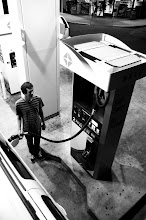Unfortunately, I won’t be making it to class tomorrow. There is an opportunity to see Stan Allen, (dean of Architecture Princeton) speak at CCA tomorrow evening for free. I would recommend it to the rest of the class as well if there were a method to do so.
In regards to the latest chapter in Experiencing Architecture, a new concept has been brought up. RHYTHM, a characteristic usually associated with music, is examined within the realm of Architecture and building. Examined were the ways in which rhythm has been incorporated into building techniques throughout history. The easiest example of this being the 1, 2, 1, 2 beat of solid, void, solid, void. By implementing an alternation of solid and void, a visual rhythm is established and though very subtle, can be experienced through the senses.
Rasmussen explains how although we cannot hear a beat to the rhythm of constructions, we can still sense it somehow, and thereby experience the harmony that a good rhythm creates. Each piece of architecture has its own way of expressing a rhythm that tends to express something that reflects its purpose.
But what can a rhythm of 1, 2, 1, 2 possibly express beyond the monotony of its infinite procession of simplicity? In the book, Rasmussen speaks of our (human beings’) insatiable appetite for making order out of chaos. A building, no matter how mundane, is a clear expression of order and uniformity amongst the chaotic uncertainty of the nature that surrounds it. He says, “It represents a regularity and precision found nowhere in Nature but only in the order man seeks to create.”
Interesting.
There is another idea here that provides a great explanation of why Rhythm works in our world. Rasmussen talks about the physical act of performing work and how developing a rhythm makes work more efficient and also require less effort. In the act of swinging a hammer for instance, one uses the muscles of the arm to move it towards its point of impact. On the downswing, or the rebound momentum carries the hammer back to its original position ready to strike again. Any other combination of forces would throw off the rhythm of this act of work and thus make it less efficient/more difficult etc. So, I thought that was an interesting way to observe a pragmatic reason for rhythm.
Subscribe to:
Post Comments (Atom)


No comments:
Post a Comment